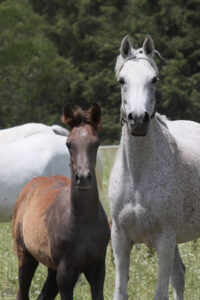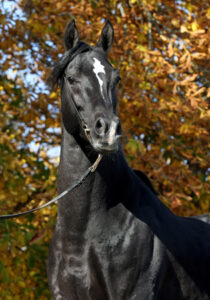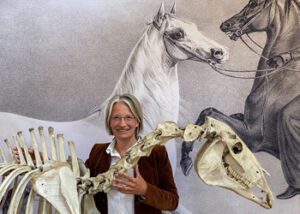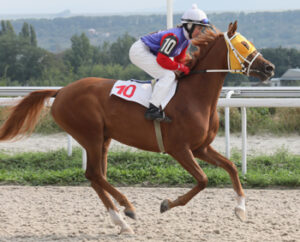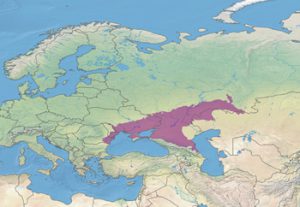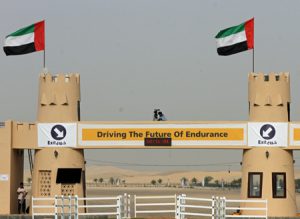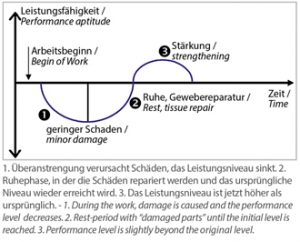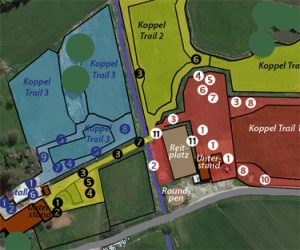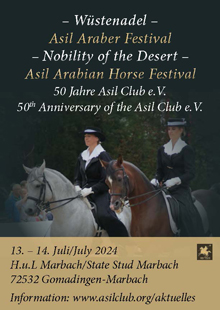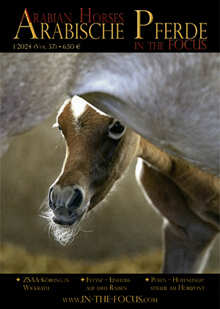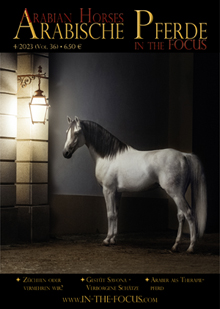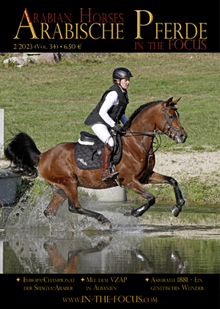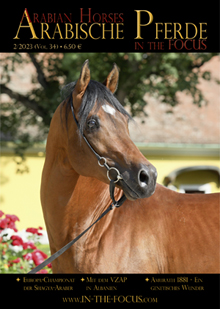Der Agrarwissenschaftler Andreas Perner hat anläßlich der VZAP-Mitgliederversammlung einen interessanten Vortrag zu derzeitigen Problemen in der Vollblutaraberzucht gehalten, den wir zum Anlass für das nachfolgende Interview genommen haben. Dabei geht es um Fehlentwicklungen in der Araberzucht, die vor allem durch die Spezialisierung und Selektion auf einzelne Merkmale entstanden sind und wozu er Parallelen in der Rinderzucht sieht, die wissenschaftlich untermauert sind.
Wissenschaft
Jan 19 2021
Faszination Rih
Dass gerade Araberfreunde von Rappen so fasziniert sind, daran ist Karl Mays „Rih“ sicher nicht ganz unschuldig, weckten er und die Abenteuer von Kara Ben Nemsi doch auch gleich das Interesse für den Orient. Doch will man bei der Rappenzucht Überraschungen ausschließen, sollte man etwas über die genetischen Grundlagen dieser Farbe wissen. Als Kind bin …
Jan 19 2021
Bairaktar’s Acquittal
Warmblood fragile foal syndrome (WFFS) has become a horror in recent years in Warmblood breeding. But because similar symptoms to WFFS have also been found in (historic) Arabian horses, research has been conducted whether or not Bairaktar, who had a significant influence on Warmblood breeding, was the origin of WFFS. Stud Director Astrid von Velsen …
Jan 17 2021
Two-year-olds on the race track
Apr 15 2020
Genetic Research – Speed and Endurance
In the last article in this series we looked at the domestication and emergence of the various horse breeds under new genetic findings. This second part will deal with various traits, such as the genetic basis for speed and endurance. Since the domestication of the horse until today, humans have created a large number of …
Jan 30 2020
Search for Traces on a Genetic Level
In recent years, the horse genome has been examined with new genetic analysis methods. The result was some new knowledge about the family tree of our horses, their domestication, the “grand sires” and “grand dams” of all domestic horses, the origin of the breeds and much more. The Eurasian Steppes, the area of domestication of …
Jan 23 2020
New method for pain sensitivity measurement in endurance horses
Dr Morgane Schambourg, DMV, MSc, Dipl. ACVS / ECVS, has carried out studies on the sensitivity to pain in the legs of endurance horses and developed a method of how this can be measured.The nociceptors (pain receptors) are responsible for the perception of pain. These are essentially free nerve endings of sensitive neurons in the …
Oct 26 2018
A Look Behind the Pedigrees
During the “Open Day” at Katharinenhof Stud, Samatha Brooks of the University of Florida gave a very interesting presentation on modern genetics. To understand the novel options breeders may have in the future, one has to look at the basics of genetics first: The genome of a horse – or any other organism – contains …
Apr 06 2018
Grundprinzipien des Trainings
Unter Training versteht man, die Leistung eines Körpers zu verbessern. Dies ist möglich, weil der Körper aus gewissen natürlichen Reparaturprozessen gestärkt hervorgeht. Wenn wir einen Organismus während einer Trainingseinheit leicht “beschädigen” (ohne daß wir die Schwelle erreichen, wo es zu irreparablen Schäden führt), kann dieser Körper die Schäden reparieren und wird (nach einer gewissen Erhohlungszeit) …
Apr 05 2018
Wildnis im Kleinformat – Der Paddock Trail
Explosiv, nervös und unausgeglichen – dieser schlechte Ruf haftet dem Araber seit langem an. Zu Unrecht! Denn viele Menschen tragen einfach seiner Intelligenz und seiner Lauffreude nicht Rechnung. Mit dem Paddock Trail wollen wir eine Haltungsform vorstellen, die diese Bedürfnisse berücksichtigt. Und das Beste ist: Jeder kann es nachmachen, und seien es auch nur einige …
- 1
- 2






